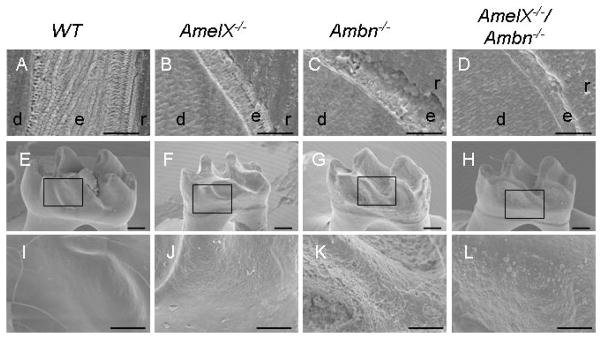Fig. 1.
Scanning electron microscopy analysis of teeth from Amel X−/−, Ambn−/−, Amel X−/−/Ambn−/−, wild-type mice. A. (A–D) Incisors from the 6-wk-old mutant and wild-type mice; the enamel (e) in junction with dentin (d) is shown. Note the thin aprismatic structure in Amel X−/− mice (B). The enamel-width of Amel X−/−/Ambn−/− (D) mice lacks is markedly reduced as compared with that of the Ambn−/− mice (C). B. (E–L) molars of the 6-wk-old wild-type and mutant mice; note the small crown size of Amel X−/− mice (F) and the double mutant (H). The enamel from Amel X−/−(F), Ambn−/− (G) and Amel X−/−/Ambn−/− (H) appeared abnormal as compared to the wild-type mice (E). (I–L) Teeth from all three mutant mice mimic amelogenesis imperfecta phenotype. Amel X−/−/Ambn−/− enamel appeared less cobbled as compared to Ambn−/− enamel Bars in A–D = 50 μm; bar in E–L = 250 μm. (e, enamel; d, dentin; r, resin)

